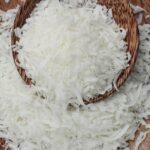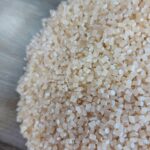CASHEW NUT SHELL OIL

In the ever-evolving confectionery industry, ensuring the perfect texture for gel-based sweets like gummies, jellies, and marshmallows is a significant challenge. Consumers expect sweets that not only taste great but also have the right consistency, chewiness, and visual appeal. To meet these expectations, manufacturers are increasingly turning to modified tapioca starch as a key ingredient in their formulations. This starch offers both flexibility and efficiency, making it a vital component in the production of gel-based confections. Below are seven essential reasons why modified tapioca starch is indispensable in this field.
Table of Contents
Toggle1. Improved Gel Strength
Achieving the ideal balance between firmness and softness in candy requires a well-formed gel structure. Modified tapioca starch plays a pivotal role in enhancing the strength of the gel, ensuring the final product holds its shape while remaining enjoyable to chew. Unlike unmodified starches or other gelling agents, modified tapioca starch provides better control over the gelling process, resulting in a more reliable and robust texture. This is especially critical for gummy candies, where consistency in the gel’s strength is key to consumer satisfaction.
2. Enhanced Texture Control
Textural consistency is one of the most critical factors in candy production. Whether it’s a soft, melt-in-your-mouth marshmallow or a firmer, chewier gummy, the texture is what sets great candy apart from mediocre alternatives. Modified tapioca starch offers unparalleled control over the final texture of the product. Depending on the level of modification, this starch can be fine-tuned to create anything from a delicate gel to a dense, chewy candy. This flexibility allows confectionery manufacturers to produce a wide range of products with varying textures, all while using the same core ingredient.
3. Reduced Cooking Time and Energy Efficiency
Efficiency in production is always a key consideration for manufacturers. Modified tapioca starch, with its faster gelatinization properties, helps reduce cooking time significantly. Unlike traditional starches, which may require prolonged cooking to achieve the desired gel consistency, modified tapioca starch activates quickly and at lower temperatures. This not only speeds up the production process but also reduces energy consumption, leading to cost savings. In large-scale production environments, where every minute counts, this efficiency can have a noticeable impact on both production output and profit margins.
4. Consistency in Quality and Production
Maintaining consistent quality across batches is a challenge for any confectionery producer. Consumers expect the same texture, taste, and appearance every time they purchase a product. Modified tapioca starch helps ensure that each batch of candy has the same quality characteristics, such as texture and clarity. It provides excellent stability and uniformity, which means fewer production issues and less waste. This consistency is particularly important for brands that prioritize product reliability and aim to build long-term customer trust.
5. Improved Clarity and Visual Appeal
In today’s competitive confectionery market, visual appeal can be just as important as flavor. Consumers are drawn to bright, colorful, and clear candies. Modified tapioca starch stands out because of its superior clarity compared to other starches. This makes it ideal for creating transparent or brightly colored gel-based candies. Clear gummies or brightly tinted jellies are more visually appealing and attractive to consumers, which can help increase sales, particularly in products aimed at children or those looking for visually striking treats.
6. Stability Across Various Environmental Conditions
One of the challenges in producing gel-based sweets is ensuring that they remain stable under a range of conditions, from production to storage and distribution. Modified tapioca starch excels in providing stability across varying environmental factors such as heat, humidity, and temperature fluctuations. This means that candies made with modified tapioca starch are less likely to melt, stick together, or degrade in quality during shipping or on store shelves. This extended shelf life and improved resilience to environmental changes make it an excellent choice for global confectionery distribution.
7. Cost Efficiency and Sustainability
In addition to its functional benefits, modified tapioca starch is a cost-effective alternative to more expensive gelling agents like gelatin or pectin. For confectionery producers looking to optimize production costs without sacrificing quality, tapioca starch offers significant advantages. Moreover, as tapioca is plant-based, it aligns with the growing consumer demand for sustainable and vegan-friendly products. With increasing focus on sustainability and plant-based ingredients in the food industry, modified tapioca starch offers an eco-friendly option that appeals to health-conscious and environmentally aware consumers.

Conclusion
The versatility and efficiency of modified tapioca starch make it an indispensable ingredient in the confectionery industry, particularly for gel-based sweets like gummies and jellies. From improving gel strength and texture control to enhancing clarity and providing cost efficiency, modified tapioca starch offers a range of benefits that help manufacturers meet consumer demands for high-quality, visually appealing, and cost-effective products. As the demand for plant-based and innovative sweets continues to grow, modified tapioca starch will remain a key player in the evolution of modern confectionery.












